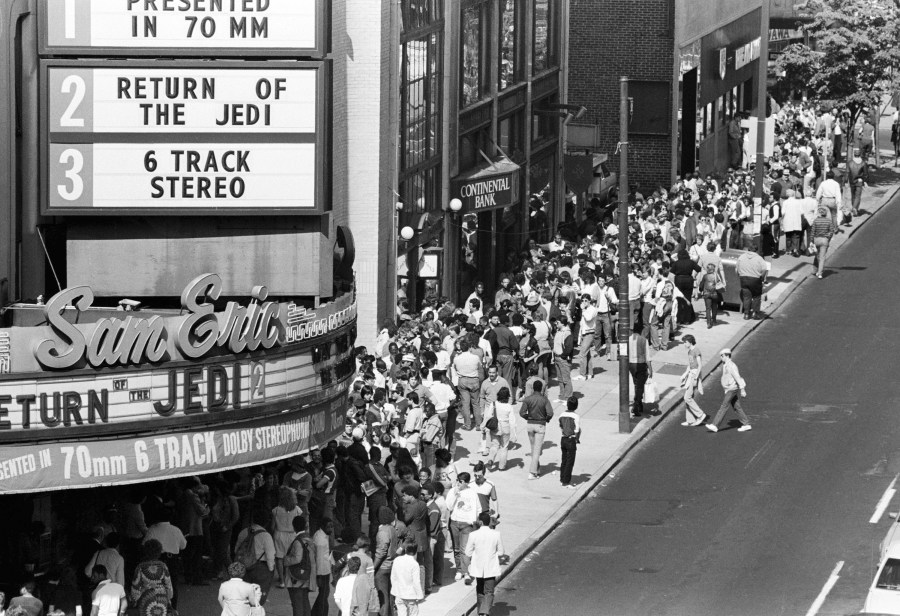The release of George Lucas’ “Star Wars” was released in theaters across the Southland in 1977, marking the beginning of modern summer blockbusters in Los Angeles.
Since its release on May 25, 1977, the film changed science fiction and filmmaking forever, with groundbreaking special effects filmed in the heart of the San Fernando Valley.
The film opened on Memorial Day weekend in only 32 theaters across the U.S. including Grauman’s Chinese Theatre, now known as the TCL Chinese Theatre, which was one of the premiere’s key venues.
With Lucas receiving an honorary Palme d’Or at Cannes on Saturday, here are some things fans may not have known about “Star Wars” and how the release impacted Los Angeles.

George Lucas and The Premiere
On May 25, 1977, Lucas was working to finish a special audio mix of the film. At the time, he had no idea the film had opened, including at the Chinese Theater.
Famously, Lucas went to enjoy a hamburger with his wife at the time, Marcia Griffin, at Hamburger Hamlet.
After finishing the intense and challenging production of the film, Lucas was anxious about its reception and chose to get away from the stress of the release. He traveled to Hawaii with his close friend and fellow filmmaker Steven Spielberg.
While they were on vacation, Lucas and Spielberg came up with the idea for “Raiders of the Lost Ark” and were building sandcastles on the beach when Spielberg mentioned his desire to make a James Bond-like adventure film.
The release of “Star Wars” in Los Angeles marked the beginning of a cultural phenomenon and the modern summer blockbuster.

Industrial Light & Magic’s Van Nuys roots
The special effects for the 1977 release of “Star Wars” were primarily created by Industrial Light & Magic (ILM), a visual effects company founded by George Lucas in 1975 specifically for the production of “Star Wars.”
ILM’s headquarters were located in Van Nuys and was chosen by Lucas because it provided the space necessary for the film’s large set pieces.
Along with the set pieces, many of the sequences were shot using studio-scale models. Iconic ships like the Millennium Falcon, X-Wing and TIE Fighter were all built using these kits.
Another key innovation was the Dykstraflex motion control camera system. This system, named after visual effects supervisor John Dykstra, allowed for precise and repeatable camera movements, making it possible to create dynamic space battle sequences with miniatures.

Following the success of “Star Wars,” ILM moved to larger facilities in San Rafael, California, in the early 1980s and continued on to create the special effects for the sequels, along with dozens of other films such as “E.T. the Extra-Terrestrial,” “Jurassic Park,” “Terminator 2: Judgment Day,””The Avengers,” and “Avatar.”
With groundbreaking special effects created at ILM’s Van Nuys headquarters and the film’s premiere at Grauman’s Chinese Theatre, “Star Wars” captivated audiences and set new standards in filmmaking.
Lucas’s visionary gamble paid off, forever changing the landscape of cinema and inspiring future generations of filmmakers, creators and actors alike.

































